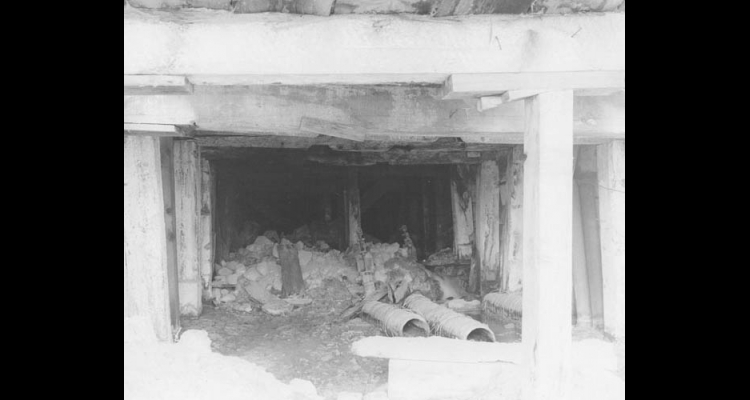Sutro Tunnel
Entrepreneur Adolph Sutro believed that a tunnel, excavated to intersect with the lower levels of the Comstock, would efficiently drain and ventilate the mines. After a failed early proposal, he incorporated the Sutro Tunnel Company with a legislative charter in 1865. His astonishing plan called for an excavation 20,489 feet or over three miles in length. It would climb one and a half percent from the Carson River Valley near Dayton, intersecting with Virginia City's mines at the 1,640-foot level.
Because of opposition, work on the tunnel was delayed until 1869. It took nine years to complete. The town of Sutro, at the tunnel mouth, became a bustling community of workers. The tunnel was wide enough for donkey-pulled carts to pass one another. Calibration with reflected sunlight every noon ensured that the tunnel would be perfectly straight. On September 1, 1878, tunnel workers broke into the Savage Mine within eighteen inches of the planned target. A strong wind howled as pressure differences equalized. The project cost about two million dollars.
Unfortunately, the Sutro Tunnel opened as the Comstock mines declined. When the major companies ceased pumping in the 1880s, water flooded the lowest levels of the mines. The tunnel, however, provided a passive drain at the 1,640-foot level. To this day, it continues to function in this capacity as water constantly flows from the tunnel mouth, leaving the historic upper levels of the Comstock mines dry.
In response to a resurgence of gold mining in the 1970s and 80s, miners began reworking the tunnel, but they only managed to repair about five hundred feet before the price of gold fell and the work ceased. Today the Sutro Tunnel and the adjacent town of Sutro remain as relicts of a great engineering feat.
Article Locations
Related Articles
None at this time.




